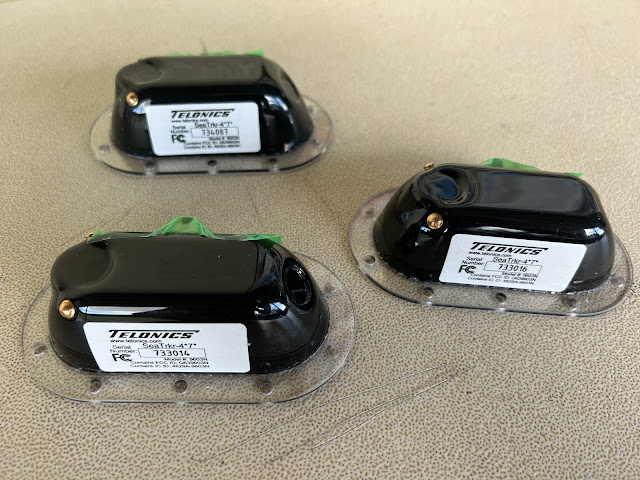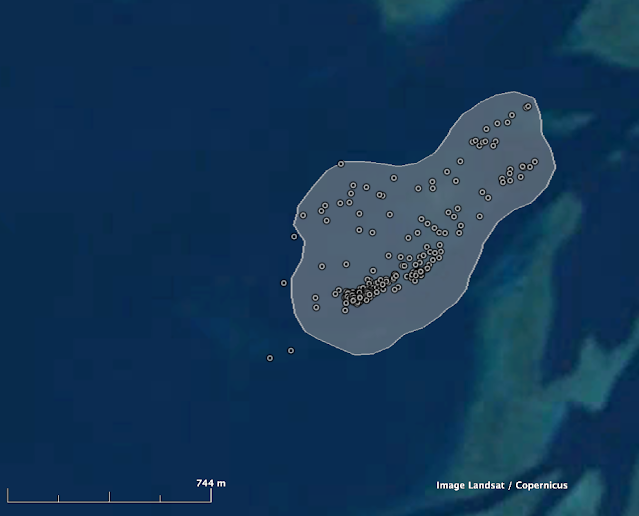Wednesday, 12/7/2022
The students, with the exception of Annika, assembled at the IT department on Wednesday to go over the procedure we follow to attach satellite tags to the carapace of post-nesting hawksbill turtles on Moso Island.
 |
| Above are our three Telonics SeaTrk satellite tags that we will take with us to Vanuatu and, hopefully, attach to the carapace of a post-nesting hawksbill turtle. |
Marc Rice used wooden blocks to represent the satellite tags and plywood to represent the turtles carapace. Sanding and surface prep were covered and the preparation of the fiberglass cloth as reinforcement was demonstrated.
The use of UV activation powder to catalyze the solidification of the resin was demonstrated and resin and glass were applied to the mock tag attaching it to the "carapace". Curing the resin using a UV light source was demonstrated as was the fact that the catalysis is an exothermic reaction and heat is generated. The whole process needs to be controlled so that the curing resin doesn't become so hot it could harm the turtle.
After the attachment demonstration and practice, we went over final packing lists, advice on what to bring and how to pack. All of the recommended items and ideas have been sent previously to students and parents.
 |
| Demonstrating how the fiberglass cloth is laid out on the tag and the carapace so as to create a strong bond that will hold the tag in place over many months and very rough conditions. |
 |
| Mixing polyester resin with some UV activating powder. |
 |
| Explaining the concept of reinforcing the resin with fiberglass cloth. |
 |
Saturating the cloth with resin to ensure a solid attachment and strong lateral bonding.
|
 |
| Although this picture was taken in Japan a couple of weeks ago, it shows the use of a UV flashlight to initiate/catalyze the curing of the resin within a couple of minutes. |
 |
| Waiting for the mock tag, resin and cloth to cure. |









Comments
Post a Comment